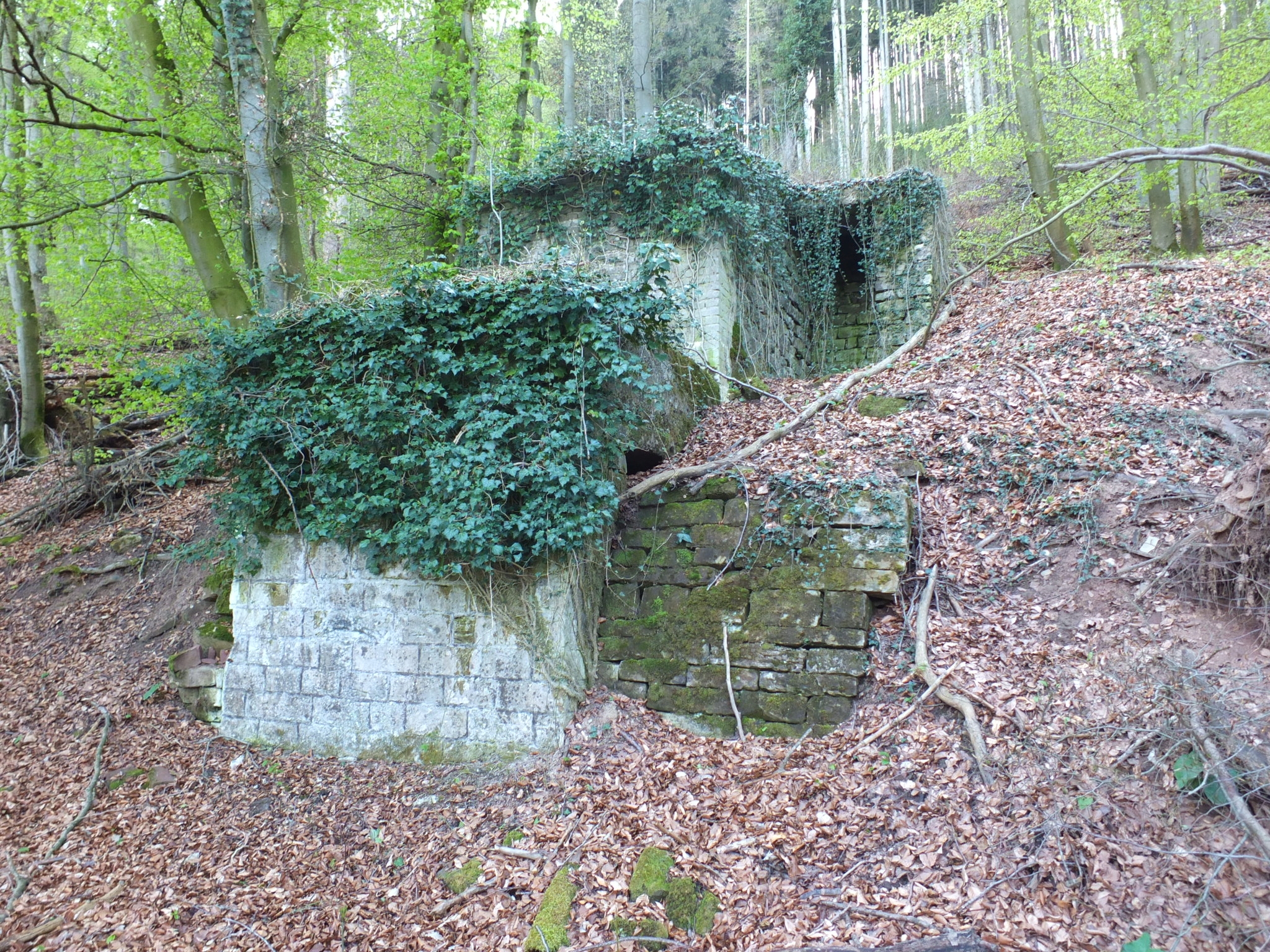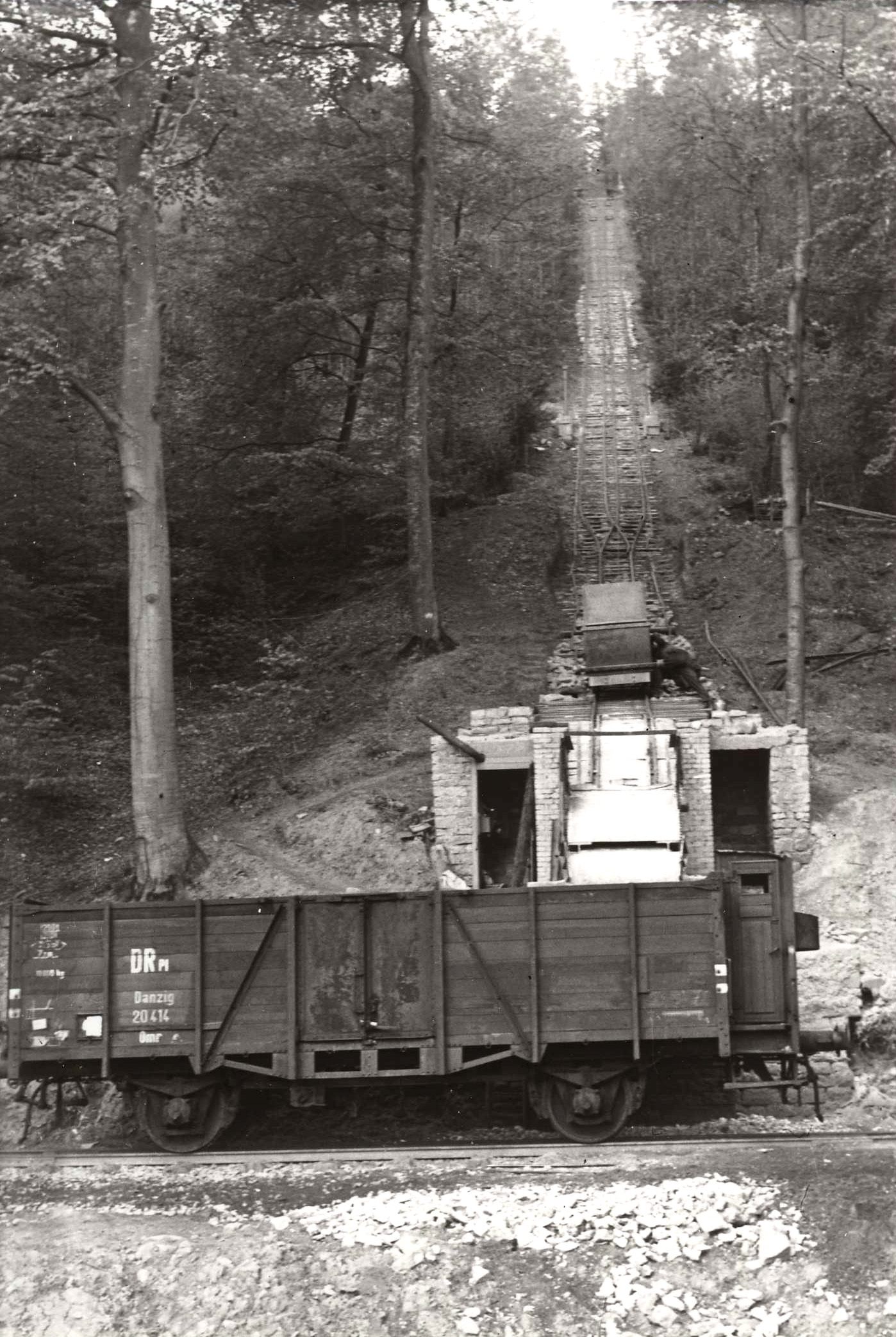Mainly in the 1940s and 1950s gypsum was mined underground in a gallery on the slope of the Giischterbësch forest. The extracted gypsum was transported in wagons via a braking incline to a loading area. This transport was gravitationally controlled by the concept, that downhill moving loaded wagons are able to pull empty wagons uphill, and a braking system regulated the speed. At the present Leiteschbësch car park was at that time a railroad siding for goods wagons to the Prince Henry railway line, which connected the Sauer Valley. The “Carrières de Gypse de Rosport” company despatched daily 8-11 wagons of gypsum to Belgium and the Netherlands, and employed around 40 workers.
The slope consists geologically of clayish marly beds, in which many gypsum strata are present. They formed in the Middle Triassic (“Muschelkalk”), a time when this region was covered by a sea. Today, the gallery serves as winter quarters for bats and is in danger of collapsing. As a result, it is strictly forbidden to enter.
Remains of the braking incline’s technical installations are still preserved on the slope. The railway line through the Sauer valley was built in the second half of the 19th century to facilitate the transportation of sandstone, dolomite and gypsum. These rocks and minerals were extracted in the many quarries of the lower Sauer valley.

Remains of the braking incline (c) NGPM Birgit Kausch 
Remains of the braking incline (c) NGPM Birgit Kausch 
Historic picture of the braking incline (c) industrie.lu 
Geological map